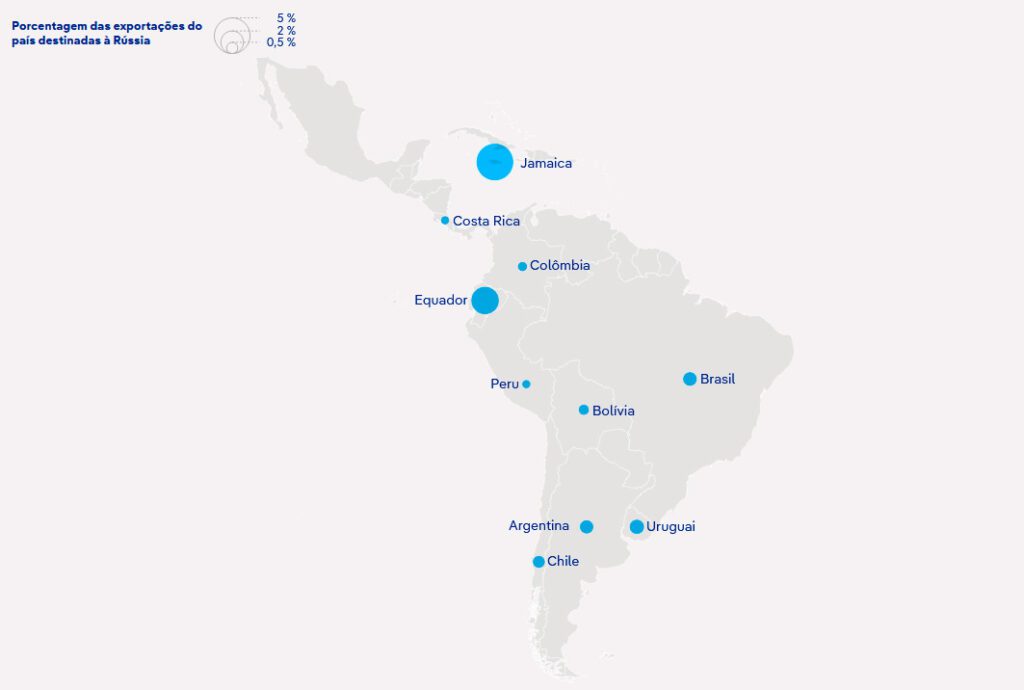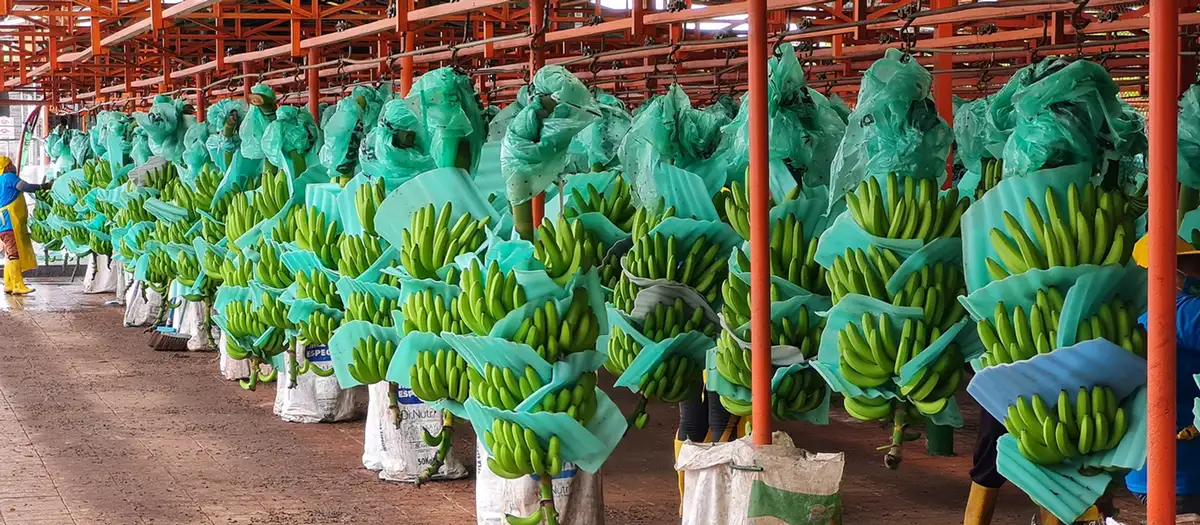Ecuador promises arms to Ukraine, Moscow suspends banana imports, Quito backs down. Is there a cause and effect relationship? How far does Latin America’s economic dependence on Russia go?
(DW) At the beginning of January, the Ecuadorean government agreed to hand over old Soviet military equipment to the United States, which would put it at Ukraine’s disposal to combat the Russian invasion. In return, Washington promised Quito modern weapons for the South American country’s fight against organized crime.
A few weeks later, the Russian authorities banned banana imports from five Ecuadorian companies, claiming to have detected an insect. The announcement sent shivers down the spine of the world’s leading exporter of the commodity: Russia is its second largest market, importing around 23% of its production in 2023.
Regardless of whether there is a connection between the two cases, the trade tensions have revealed Ecuador’s economic dependence on Russia: after Moscow’s veto on bananas, Quito announced that it would not send military equipment destined for war-torn Ukraine.
Main products exported to Russia by country
| Country | Main export product | Exports to Russia in US$ | % of the country’s total exports |
| Jamaica | artificial corundum, aluminum oxide and hydroxide | 99.7 million | 5.24 % |
| Ecuador | banana | 779.8 million | 2.2 % |
| Brazil | soybeans | 889.1 million | 0.27 % |
| Bolivia | carbonates | 34.1 million | 0.25 % |
| Chile | frozen fish | 243.9 million | 0.24 % |
| Argentina | unspecified goods | 204.5 million | 0.23 % |
| Uruguay | butter | 23.9 million | 0.21 % |
| Costa Rica | fruits such as dates, figs, pineapples, avocados, guavas, mangoes and mangosteens | 22.4 million | 0.15 % |
| Colombia | frozen beef | 82.6 million | 0,14 % |
| Peru | molluscs for human consumption | 18.2 million | 0,03 % |
“No country can be pressured by Russia”
Compared to the US, Europe and Asia, Russia is a marginal trading partner for Latin America. In 2022, only 0.86% of the region’s imports came from the Eurasian country, and 0.34% of exports were destined for it, explains Jorge Alberto López, a member of the Economy, Society and Territory Academy at the Autonomous University of Chiapas in Mexico: “Russia is not China for Latin America and the Caribbean, because the Asian giant has had greater penetration in trade.”
Mauricio Alonso Estévez, a member of the Center for Eurasian Studies at the Universidad Anáhuac Veracruz, adds: “Even countries like Venezuela and Nicaragua, which are critical of US policies in the region, do not have a close commercial relationship with Russia. In some cases in particular, such as Cuba and Ecuador, Russia appears as a significant trading partner. However, their trade volumes are small.”
On the other hand, the Eurasian country is the largest supplier of fertilizers in the region, with 21%. Other important imports are wheat, steel and aluminum. According to the Economic Commission for Latin America and the Caribbean (ECLAC), Brazil, Ecuador, Argentina, Chile, Paraguay and Mexico are the six main exporters to Russia. In terms of imports, Brazil, Mexico, Argentina, Peru, Colombia and Ecuador lead the way.
“None of the Latin American and Caribbean countries can be politically pressured by Russia, since they don’t depend on that market,” says economist López, for whom the case of Ecuadorian bananas “is the exception, not the rule”.
Mauricio Estévez shares this view, explaining: “Ecuador gave up the delivery of military equipment to the US because of the political pressure that was exerted at local and international level to maintain the country’s neutrality in the face of the conflict in Ukraine.”
The 10 Latin American and Caribbean countries most dependent on Russian exports

Russia needs high technology, Latin America doesn’t have it
For his part, political scientist Vladimir Rouvinski, director of the Center for Interdisciplinary, Legal, Social and Humanist Studies (CIES) at Icesi University in Cali, Colombia, points out that after the Russian invasion of Ukraine on February 24, 2022, Moscow intensified its economic relations with Beijing.
In 2022 and 2023 there was also an “emerging trend” towards greater growth in trade relations between Latin America and Russia, “even so, Latin America has not been able to replace Europe and others who have introduced sanctions against Russia, because Russia needs high-tech items that Latin America does not offer”.
However, logistical issues, the lack of established partners and restrictions on the use of tools that facilitate international business – such as the SWIFT banking system – are some of the main challenges, Rouvinski points out. He says that the potential for growth is limited, since “Latin America can offer goods, but Moscow doesn’t need them, because that’s precisely what it has in abundance”.
